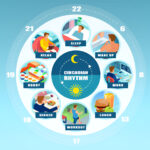People who deal with insomnia experience frustration since non-surgical treatment options exist to manage this condition effectively. CBT-I, a clinically established method, addresses sleep problems at their core.
When looking for sleep remedies, patients should practice relaxation through meditation and improve sleep hygiene while adding natural supplements, including melatonin, to promote sleeping better through the night.
Exercise regularly, as well as minimizing caffeine consumption, serves as a vital component for treating insomnia through nonoperative means.
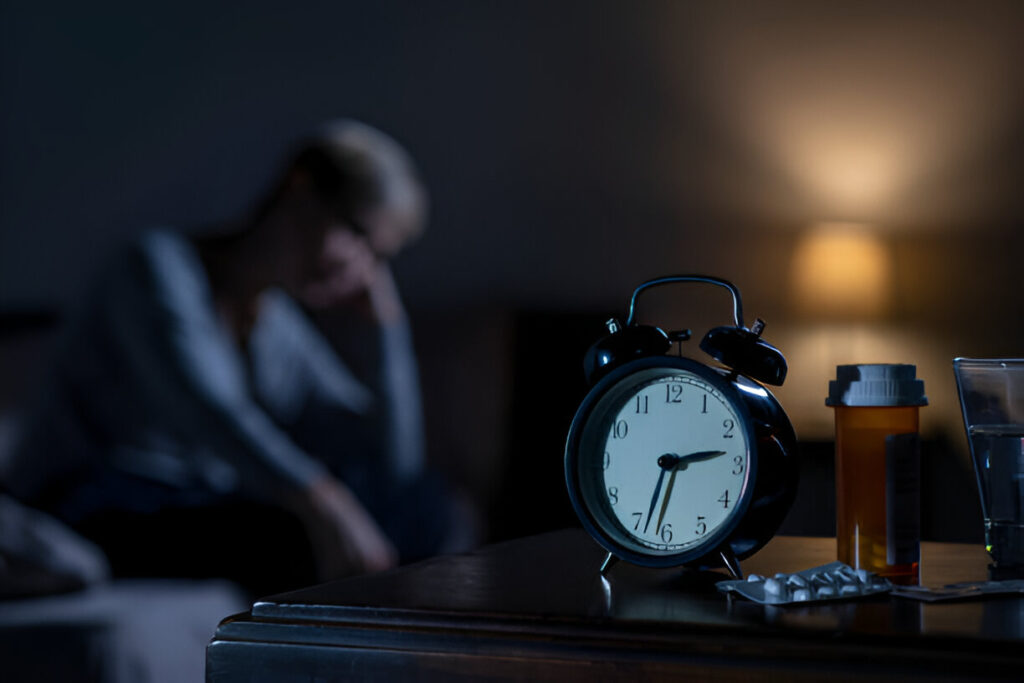
1. Harnessing the Power of Sleep Hygiene
Understanding Sleep Hygiene
Sleep hygiene practices create consistent and uninterrupted sleep, which creates a restful morning feeling when people wake up. Creating favorable conditions in daily life and the environment is essential because it improves the natural sleep pattern. Proper sleep hygiene will improve your health, daily performance, and mood.
Understanding and applying sleep hygiene practices remains essential because poor sleep habits are a hidden cause of sleep problems for numerous individuals.
The Role of Routine
Among the elements that form sleep, hygiene is a key and compelling component. Consistent bedtimes and daily wake times on weekends permit your body to learn its natural sleep patterns, enabling sleep abilities and natural morning wakefulness.
Regular sleep and wake times help to improve the natural strength of the circadian rhythm by maintaining various body functions, including sleep. When your brain receives signals from routine structure, it understands sleep time has arrived and promotes easy transitions into restful sleep.
You will start experiencing better rest while maintaining steady energy throughout the day after you maintain this regular sleep schedule.
Creating the Right Environment
Sleep hygiene requires a suitable environment where you sleep to function correctly. Sleep occurs best when your room remains quiet with minimal light and cool temperatures because these conditions help your body reach deep sleep phases.
Cushioned bedding materials consisting of high-quality mattresses and pillows prove highly beneficial for sleep comfort. Using electronic devices in the evening hours should always be prevented. The melatonin signaling of sleep is disturbed by the blue light from electronic devices like phones and computers, which hinders the natural nighttime onset of sleep at night.
Lifestyle Choices Matter
Sleep hygiene is a complete system consisting of life decisions made during the day and physical sleep preparations. Physical exercise is a sleep-promoting factor, enabling the body to control its sleep-wake cycles.
Exercise should be avoided late at night since performing physical activity shortly before sleep will enhance alertness instead of inducing tiredness. The sleep hygiene of your wellness depends on your decision to consume caffeine and alcohol since caffeine functions as a stimulant to delay sleep.
In contrast, alcohol disrupts the essential REM stages. Understanding these elements will help you maintain a sleep-promoting lifestyle rather than a sleep-harming one.
The Importance of Wind-Down Time
Before sleeping, you must dedicate time to unwind. Your body will receive sleep signals through relaxation, reading, meditation, and gentle stretching. Before bedtime, you should eliminate stressful activities and demanding work-related assignments because they stimulate anxiety and break your ability to decompress.
A pre-sleep ritual is essential to proper sleep habits because it guides physical and mental systems toward peaceful rest. Deciding into peaceful sleep can be assisted by taking warm baths alongside light yoga practice and listening to calming music to reduce heart rate.
Nutrition and Sleep
Your sleep hygiene significantly depends on what type of food you choose to consume. Eating large meals before bedtime produces stomach discomfort that substantially hinders your ability to sleep. The human body benefits when certain foods supply necessary nutrients that help create relaxation during bedtimes.
The scientific research indicates that magnesium-rich foods, including leafy greens, bananas, and nuts, contribute to more balanced rest. Intake of turkey combined with dairy-based foods allows your body to generate serotonin, which subsequently helps produce melatonin. Your efforts to establish good sleep hygiene can benefit from watching your meals during evening hours.
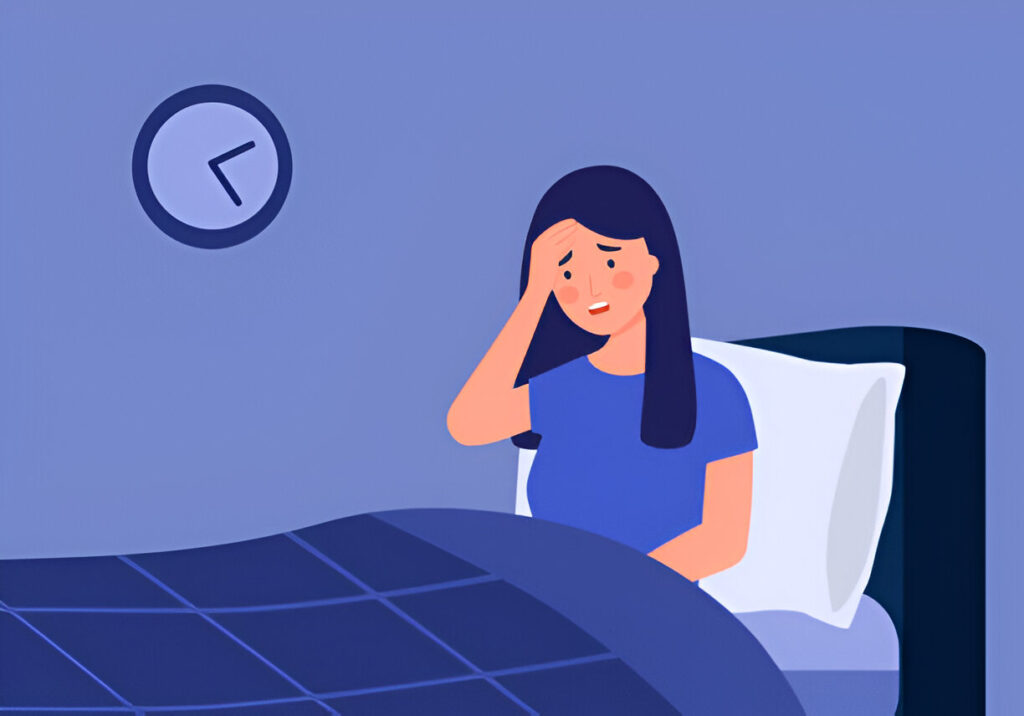
Managing Stress Effectively
Sleep suffers significantly from stress, a popular obstacle to restful nights, so controlling stress becomes crucial for proper sleep hygiene. Reducing stress effects on your sleep becomes possible by using relaxation methods such as mindfulness combined with deep breathing and progressive muscle relaxation.
High stress makes it difficult for your body to move from an aroused condition into a restful state for recovery. Daily practice of stress-reduction methods directly benefits your ability to get better sleep. This complete method is essential in sleep hygiene practice because it requires awareness from everyone.
Sleep for Wellness
Sleep hygiene represents something more significant than quality rest, as it maintains your entire physical and mental state of health. Proactive sleep hygiene practices help people decrease stress levels, improve brain operations and mental state, and promote better physical wellness.
Creating a regular bedtime schedule while designing the perfect sleep space, selecting healthy activities, and practicing stress management helps you achieve better nighttime rest and gain lasting positive outcomes from restful sleep. Sleep functions as a force that enables people to achieve better health and increased energy levels.
2. Behavioral Strategies to Reclaim Restful Nights
The Importance of Sleep
Humans need sleep beyond its function as rest because the activity sustains mental and physical well-being. Sleeping adequately leads to better mood management, stronger memory absorption, and a healthy immune system defense.
Countless persons lose their ability to acquire proper rest because stress, unhelpful behavioral patterns, and environmental interferences combine against them. People must grasp the essential function of sleep in wellness to bring back peaceful nighttime rest.
Understanding Sleep Problems
Behavioral strategies must be initiated after understanding the causes behind persistent sleep problems. Regulation issues stemming from anxious thoughts, inconsistent sleep time patterns, overuse of electronic devices, and unhealthy life patterns prevent your body from quickly entering restful sleep states.
Sleep disturbances interfere with the body clock, making falling and maintaining sleep during nighttime hours more difficult. Identifying precise sleep problems remains vital before choosing behavioral approaches that match your circumstances.
Building a Consistent Sleep Routine
A reliable approach to recovering restful sleep emerges through creating regular sleeping habits. Getting to bed and rising at the exact scheduled times throughout the week, including public holidays, helps the body develop proper synchronization between sleep and wake cycles, known as circadian rhythm.
The body operates on natural sleep and wake patterns through its circadian rhythm; thus, aligning this rhythm allows it to feel sleepy at proper times while feeling more rested upon waking up. Establishing a regular sleep routine lowers mental effort regarding when to sleep while assisting with bedtime relaxation.
Create a Sleep-Inducing Environment
The surroundings through which you sleep will either help you rest better or worse. Behavioral sleep hygiene improvement methods primarily strive to perfect the conditions in which people sleep. A restful night of sleep starts with creating an environment with complete darkness and silent quietness with cool temperature settings.
Your body needs darkness, quietness, and comfortable temperatures to move toward deeper sleep states successively. Screen time should be limited before bedtime since the device’s blue light interferes with melatonin production, thus creating difficulties in brain sleep onset. Curtain darkness combined with earplugs or white noise machines will create an environment conducive to restful sleep.
Wind-Down Rituals Matter
Regular sleeping patterns play an equal role in achieving proper rest and pre-bed preparation. The body gets a signal from this process to shift from daytime tasks toward peaceful rest at night. Relaxing pre-bed activities, which include reading books or practicing meditation alongside bathing with warm water or performing light stretching, will calm both mind and body.
The practice of working or performing strenuous exercise ought to be avoided when preparing to sleep. All your bedtime activities should promote relaxation and reduce tension. A wind-down ritual cues your body to transition into restful slumber during bedtime.
Mindfulness and Stress Reduction
Stress is one major factor that obstructs peaceful sleep, so our bodies cannot access their essential deep rest phases. Sleep quality improves notably when individuals use behavioral methods to develop stress reduction skills and be more mindful.
Deep breathing exercises, increasing muscular relaxation, and guided meditation techniques help control the nervous system, which lowers how stress affects sleep quality.
The ability to obtain restful sleep increases when people deliberately shift their focus from worries and calm themselves mentally in the hours before bed. Daily mindfulness exercises provide better night rest results and stronger mental resilience against stress.
Exercise for Better Sleep
Exercise is a top behavioral approach that enables people to achieve peaceful nighttime rest. Physical activity controls sleep patterns through deep, restful sleep while shortening the duration needed for falling asleep.
Scientific evidence demonstrates that daily physical exercise leads to better nighttime sleep and fewer nighttime wakefulness interruptions.
High-intensity exercise should be delayed from sleep because such activities elevate adrenaline, which hampers body relaxation. You will enjoy better sleep quality by practicing moderate exercise as a part of your regular activities, including walking, swimming, and yoga.
Limiting Stimulants and Distractions
Behavioral techniques used for better sleep require careful attention to your daily activities, environmental interactions, and the things you consume.
The stimulants caffeine and nicotine affect sleep because they boost heart rate and stimulate alertness. Late consumption of stimulants raises the difficulty of preparing for sleep at night.
Alcohol might create initial sleepiness, yet it produces adverse effects on deep sleep stages, which results in fragmented sleep. People must regulate their nighttime activities by avoiding prolonged screen use and job responsibilities, preventing restful slumber.
Body relaxation becomes difficult because certain activities and substances prevent proper restful states during sleep transitions.

The Power of Nutrition
Food contributes to power generation, but certain types of food affect our capacity to rest. The behavioral approach for restful sleep requires people to focus on their evening diet.
Consuming heavy food or spicy dishes during night hours leads to digestive problems, which produce discomfort when combined with sleep-disturbing effects. Particular food choices serve as beneficial sleep-promoting elements for restful sleep.
The relaxation process is supported by dietary magnesium, which exists in almonds along with leafy greens. Turkey, dairy products, and bananas contain tryptophan to boost serotonin levels and produce the sleep-regulating hormone melatonin.
Developing evening meals that promote healthy sleep represents a behavioral approach to enhance your restful period.
Limiting Naps During the Day
Taking naps during the day has refreshing effects but breaks down nighttime sleep unless proper nap management techniques are followed. Prolonged afternoon naps have the effect of decreasing sleep pressure before bedtime approaches. To nap effectively, your rest periods throughout the day should remain within 20 to 30 minutes and happen before the afternoon hours.
The sleep cycle remains undisturbed by these practices, which produce maximum sleepiness before bedtime. The behavioral technique of proper nap timing helps your body establish alignment with its internal clock, thus resulting in better quality nighttime rest.
Cognitive Behavioral Therapy for Insomnia (CBT-I)
The evidence-supported treatment CBT-I provides a therapeutic approach for people dealing with long-term insomnia and regular sleep interruptions by helping change unproductive sleep patterns and thoughts. CBT-I therapy assists individuals in working with their therapist to discover sleep-causing patterns to modify those behaviors that lead to poor rest.
The treatment employs stimulus control to link beds to sleep activities instead of all activities and combines cognitive restructuring to change sleep-related negative thoughts and sleep restriction to limit bed utilization for better sleep quality in the future. CBT-I functions as an established behavior-focused approach that helps patients achieve peaceful sleep periods, particularly if they struggle with ongoing sleeping difficulties.
Consistency is Key
Any behavioral plan for gaining restful nights must consistently be the main element in its success. Any progress toward better sleep habits requires dedication because achieving the results takes sustained effort.
The key to success lies in patient dedication supported by continuous monitoring and slow execution of adjustments in the sleep improvement process. Proper behavioral strategies and ongoing dedication will turn restful nights into the standard practice, improving our physical state, mental clarity, and emotional stability.
A Holistic Approach
The path to reestablishing restful nights demands detailed action focused on recycling behavioral methods to maintain stability with proper conditions, organized plans, and total wellness status. Modifying your personal choices regarding lifestyle, together with behaviors and mental focus, enables you to master your sleep problems and sustain restful nights.
Through activities such as mindfulness and exercise, healthy eating, and stress management, your behavioral approaches will release the sleep-healing power to enhance your overall quality of life. Cryptic rest requires more than extended sleep duration, which means obtaining improved sleep quality.
3. Mindfulness and Acceptance for Better Sleep
The Sleep Struggle
Sleep presents itself as a problematic challenge to most individuals. Painful tossing, the rapid flow of thoughts, and worry about insufficient rest tend to generate successive sleepless nights. The typical sleep hygiene methods, consisting of dark settings and standardized bedtime routines, sometimes fail to produce the necessary results during sleepless moments.
Better sleep quality may result from more than environmental adjustments since we need better methods to manage our thoughts and feelings. The approach to sleep improvement now combines mindfulness practices with acceptance methods, which offer new pathways to tranquility of mind and restful sleep.
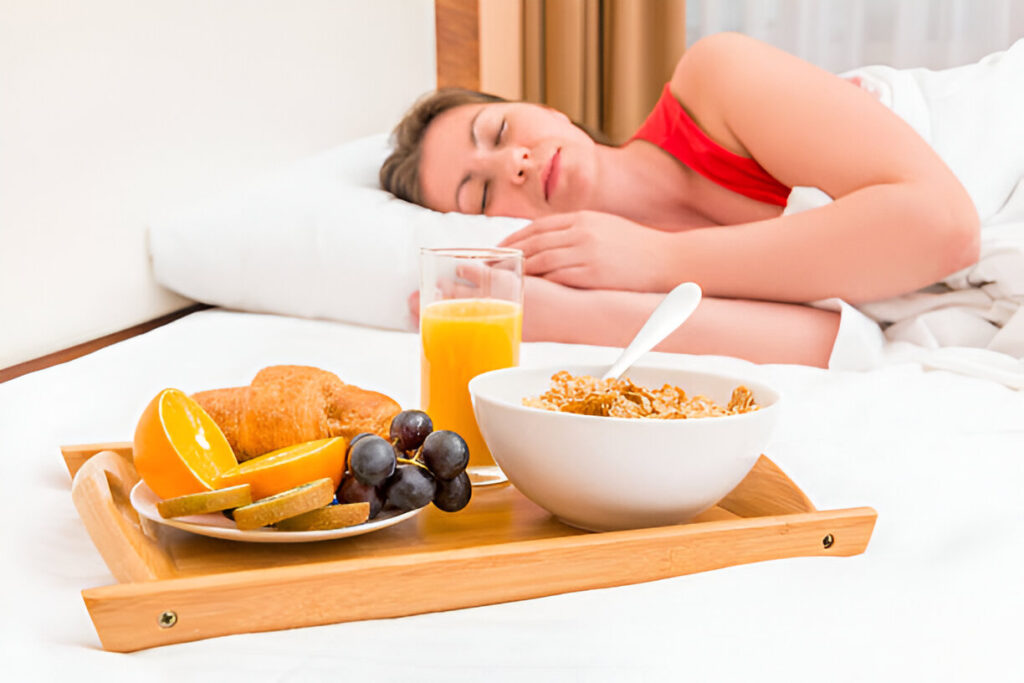
Understanding Mindfulness
Mindfulness allows people to remain fully attentive to their current circumstances while withholding any evaluation. Mindfulness practice requires conscious monitoring of your present sensations combined with your thoughts and feelings without attempting any modification. Practicing mindfulness teaches us to meet our sleep process without any opposition.
As a practice, when you focus on mindfulness, you can release sleep-related anxieties so you can gently experience your period of rest. Transformative changes occur in people dealing with insomnia and sleep anxiety when they shift their outlook.
The Role of Acceptance
The foundation of mindfulness practice, acceptance, is a dominant force in developing improved sleep patterns. The practice of acceptance requires you to endorse your immediate situation without intervening to achieve different results. When you discover you cannot fall asleep, you should adopt an accepting attitude toward your restlessness before choosing to sit in your present circumstances.
People should relinquish their demand for flawless sleep performance instead of renouncing their sleep efforts and accepting how sleep might progress slowly and how your mind functions helps you avoid the mental strain that usually keeps you from sleeping.
Breaking the Sleep Anxiety Cycle
People with insomnia frequently develop sleep anxiety as one of their main sleep problems. Growing tension about lack of sleep creates barriers that hinder the actual ability to sleep peacefully. Practicing mindfulness and acceptance helps develop a new perspective when approaching sleep, thus breaking this cycle.
During the practice, you welcome your thoughts and feelings of frustration as natural components of sleep. Eliminating stress and pressure enables patients to reach sleep despite what usually appears impossible. The brain learns to sleep naturally without strife through consistent practice of this intervention.
Mindful Breathing for Rest
Sanity-based respiration is an outstanding relaxation method that helps people transition from wakefulness to rest. Focusing your thoughts on breathing will produce a tranquil state, which allows the mind to become quiet. The controlled pace of your breathing tells you your whole body needs to shift to a more relaxed state.
An essential breathing exercise is a passive method that helps your body transition to a calm state for sleep onset. Regularly breathing before bedtime brings you into peaceful alignment, resulting in healing and restful sleep patterns.
Reducing the Pressure to Sleep
The powerful aspect of mindfulness and acceptance for better sleep involves significantly decreasing personal pressure related to sleep. Too many individuals focus intensely on their need for sleep, which creates an effect that opposes their sleep process. Worrying about whether you will fall asleep with your concern about how much rest you will obtain builds tension, making sleeping even more challenging.
Assuming an accepting frame of mind, let sleep return naturally without rushing. The shift toward a different perspective improves your capacity to fall asleep because it eliminates the concern from your mind that arises while trying to make yourself sleep.

Creating a Sleep Ritual
You can incorporate mindfulness practices and acceptance principles into your bedtime routine as signals for your body to progressively relax. A scheduled mindfulness practice, including breathwork exercises and stretching or meditation, will improve your mental and physical preparation for sleep.
The rest ritual needs little complexity because it reduces activity while offering an opportunity for relaxation. Repeated practice of this routine communicates to your physical self that relaxation is necessary right before sleep arrives under appropriate conditions.
Letting Go of Control
The need to control all aspects of sleep creation stands as one of the main obstacles to getting restful rest. Every aspect of the sleeping experience attempts to control, from decision-making regarding sleep onset to achieving preferred sleep depth among numerous people who try to govern their nighttime rest.
Mindfulness helps us understand that we cannot manipulate sleep, so we should embrace the readiness for restful sleep when it arrives. Releasing these controlling tendencies results in increased ease when it comes to falling asleep. Practicing nonattachment, you welcome a peaceful state that leads to natural rest even when you cannot achieve perfection every night.
4. Digital Tools for Restorative Sleep
The Need for Better Sleep
The current speedy world environment has made restful sleep scarce for many people. Our ability to relax during night hours becomes challenging because of combined factors such as stress levels, quiet, schedules, and technology usage. Restorative sleep is an essential factor for human health regardless of difficulties.
Designed digital tools deliver evidence-based practical support that helps people improve their rest quality when they struggle to obtain enough sleep. Sleep management tools, cognitive relaxation methods, and optimal sleep environment enhancements lead to better nighttime rest.

Sleep Tracking Technology
People widely adopt sleep-tracking technology as a leading digital tool for achieving restorative sleep. People who use fitness trackers, such as watches and sleep monitors, can track their patterns and movements while sleeping. These tools record your sleep period, patterns, and health measurements to show your actual sleeping condition.
The gathered data allows you to identify patterns, subsequently assisting you in determining when to go to bed and identifying factors that could impact your sleep. Understanding sleep patterns enables you to create specific modifications that lead to better sleep quality.
White Noise for Calm
Sleep begins to evade many individuals since they cannot ignore traffic noises, armature, or electronic machine sounds. Digital sound generators, white noise apps, and machines serve as convenient methods for noise reduction by providing continuous relaxing sounds that minimize disruptive environmental noise.
Users of these apps have diverse options, including rain sounds, ocean waves, and gentle fan sounds to relax before falling asleep smoothly. White noise benefits sleep interruptions, giving people more profound, restorative rest in sleep-inducing environments.
Sleep Meditation Apps
Through digital meditation apps, people whose minds never rest can find valuable assistance restoring restful sleep. Calm, Headspace, and Insight Timer provide users with pre-programmed meditation instructions to promote sleep rest. The training sessions use breathing exercises, muscle relaxation methods, and mindfulness instructions to bring mental tranquility and physical body readiness before sleep.
Research indicates that meditation reduces stress and relaxation, which leads to easier sleep duration during the nighttime. Adding sleep meditation to your night routine helps produce better-quality sleep while providing more relaxed sleep periods.
Smart Lighting Solutions
Proper lighting is essential in determining whether we can fall asleep quickly and adequately wake up throughout the day. When exposed to bright lighting, especially blue light emissions from screens, the human body produces decreased melatonin hormone.
The nighttime illumination in your bedroom becomes more effective through innovative lighting technology, which automatically changes its light intensity and spectrum according to the current hour.
Philips Hue, alongside LIFX, enables users to generate relaxation through dimmed light progressions from cool to warm during their evening hours. Programming the system allows it to adjust light intensity slowly, from dim to bright in the morning, just like a natural sunrise, creating a refreshing wake-up experience.
Sleep-Friendly Wearables
The Ouray Ring and the WHOOP Strap are examples of wearable devices that serve as excellent digital tools for improving restorative sleep. Your rest quality is measured by wearables tracking vital factors, including heart rate variability, body temperature, and nighttime body movements. These devices monitor how your everyday physical routines, as well as your habits, affect your sleep patterns.
The device examines your sleep issues to detect screen overuse and late workouts, which negatively affect your rest quality, allowing you to plan better sleep habits. The wearables track your condition round-the-clock to guide you in making sleep-friendly lifestyle choices.
Relaxation and Breathing Apps
Deep breathing exercises produce excellent results for restorative sleep treatments when practiced by people dealing with pre-bedtime anxiety and stress. Relaxation and breathing applications have digital features that lead users through various techniques to reach relaxation before bedtime.
Through Breethe and Prana Breath, along with Relax Melodies, users can find breathing exercises that assist with relaxation during bedtime to stop mental activity before sleep. The tools guide your breaths progressively slower so your body activates its parasympathetic system to make sleep restful.
Blue Light Filters
Sleep can get disrupted significantly when blue light from electronic devices inhibits the creation of melatonin in users. Digital tools these days incorporate blue light filters to minimize the blue light released by screens. The screen display on f.lux and the iPhone Night Shift feature warms up in the evenings to reduce sleep disruptions.
The average smartphone and computer user can access built-in “Do Not Disturb” features and sleep settings, which minimize disturbances in the hours before sleep. The sleep-friendly features enhance the surrounding conditions, thus facilitating good sleep habits and, consequently, better restful sleep.
Cognitive Behavioral Therapy
Cognitive Behavioral Therapy for Insomnia (CBT-I) presents itself as an effective digital tool that effectively treats sleep disorders. Individuals access evidence-based treatments with apps such as Sleepio and CBT-i Coach that assist users in learning deliberately designed techniques to resolve the origins of insomnia.
The main goal of CBT-I is to adjust negative thinking patterns and insomnia-weakening behaviors that disrupt rest periods by replacing them with beneficial methods. These digital solutions provide extended solutions to people who need sustainable sleep quality improvement through their combined focus on cognitive practices with behavioral strategies.
Tracking Sleep Quality
Some modern sleep monitoring applications and devices perform data analysis, which evaluates the quality level of your rest. The monitoring tools analyze your time spent in deep sleep and the number of nighttime wakeups you experience.
The Withings Sleep Analyzer and SleepScore deliver specific sleep efficiency reports through which you can receive unique recommendations based on your rest patterns. The data-driven methodology allows you to identify particular parts of your sleep cycle that require improvement so that you can direct your sleep quality advancement efforts.
5. Natural Interventions to Combat Sleeplessness
Understanding Sleeplessness
The inability to sleep affects many people who typically experience this problem through stress and worry, as well as inadequate sleep practices or unfavorable environmental conditions. Insomnia leads to diverse problems that create fatigue, together with mood disturbances and mental impairment.
A significant number of people decide to discover natural sleep remedies instead of using medication despite the available treatment options. Natural sleep methods direct people to quiet their minds and bodies while building an environment for rest and developing sleep-promoting practices that foster restful sleep.
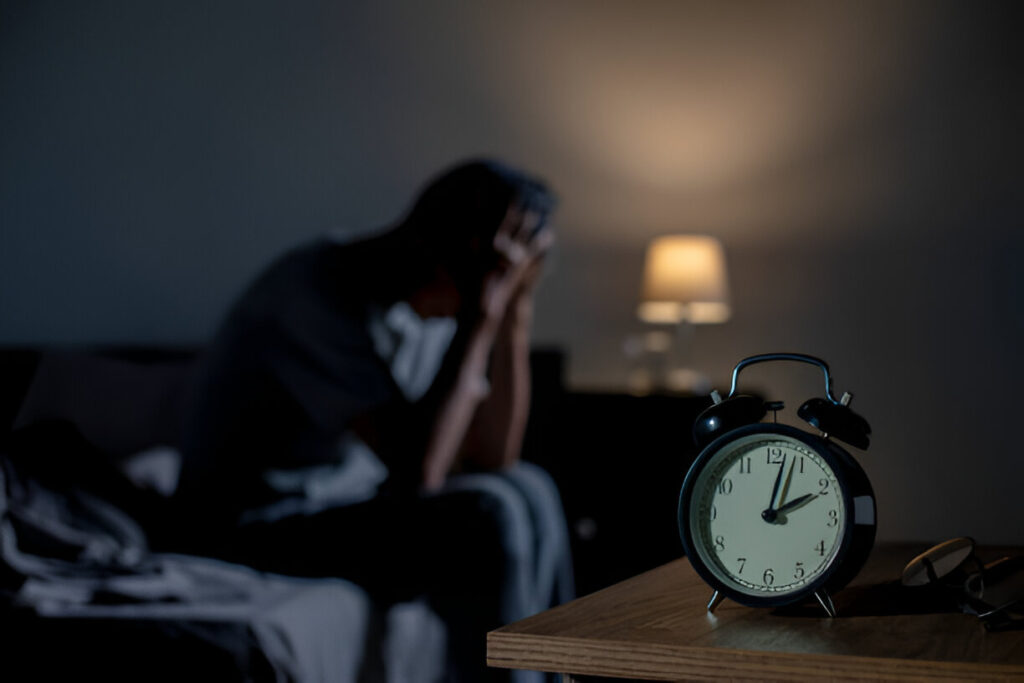
The Power of Herbal Remedies
Throughout the centuries, people have utilized herbal remedies to treat their sleep problems naturally and medicinally. The herb chamomile stands among the most used and beneficial remedies for sleep improvement. The calming characteristics of chamomile relieve tension in the body’s nervous system, thus allowing people to achieve peaceful sleep.
People widely use valerian root as an herb to treat insomnia and manage anxiety due to its sedative properties. Lavender serves as a preferred, naturally calming remedy through essential oils and tea because its scent effectiveness helps reduce stress and decrease anxiety. Herbal night usage can establish a non-forceful yet remarkably effective solution against persistent sleeplessness.
The Role of Aromatherapy
Aromatherapy stands as a natural sleep treatment that significantly improves nighttime rest quality. The essential oil compounds lavender, sandalwood, and bergamot exhibit natural sleep-promoting abilities that aid relaxation.
You can achieve relaxation through essential oil diffusion in your bedroom or bathing in warm water containing essential oils to create an atmosphere that promotes sleep.
Scientific studies indicate that specific fragrance components have proven effective at decreasing heart rate and blood pressure to produce relaxed states in the body.
Aromatherapy represents a basic, noninvasive method of promoting peaceful sleeping, which delivers excellent assistance for individuals facing problems with restful sleep.
Mindfulness and Meditation
The practice of mindfulness meditation proves highly effective as a natural treatment because it helps control the relentless thinking that causes insomnia. Different techniques, such as deep breathing and guided meditation, can help the human body achieve relaxation and silence mental nighttime chatter.
The regular practice of mindfulness techniques teaches brains to handle stress and anxiety more composedly since anxiety and stress both contribute to sleeplessness.
Short mindfulness exercises during the evening allow your body and mind to relax appropriately before sleep so you can experience restful slumber.
Proper Sleep Hygiene
Good sleep hygiene represents one of the crucial natural ways to fight sleeplessness. Sleep hygiene describes the healthy practices people need to create for better rest. People should keep regular sleep-wake hours while creating suitable nighttime conditions by using low temperatures and pitch-black and noise-free rooms and curtailing their digital device usage before bedtime.
Establishing a bedtime routine focused on relaxation and sleep disruptor elimination increases your chances of falling asleep and maintaining quality rest periods. Sleep hygiene is an extended treatment approach in which people naturally enhance their sleep quality and resolve their sleep problems.
Physical Activity and Sleep
Regular participation in physical activities improves the quality of sleep and reduces cases of sleeplessness among people. Physical exercise enables the body to regulate its internal time mechanism while producing endorphins and decreasing stress levels, which enhances sleep quality.
Exercise intensity should be minimized in the hours before bed because high-adrenaline exercise creates difficulties for the body to rest. Early completion of your daily workout session will provide optimal sleep benefits. Minimal physical exercises such as yoga and stretching provide ideal muscle relaxation techniques that ready your body for sleep.
The Importance of Nutrition
Food consumption significantly determines the overall quality of your sleep experience. Some foods, together with beverages, either enhance peaceful sleeping patterns or result in sleep difficulties. A diet rich in magnesium-containing foods, including leafy greens and nuts, relaxes the body while sleep quality worsens.
The amino acid tryptophan in turkey, dairy, and bananas creates the sleep-regulating hormones serotonin and melatonin throughout the body. Drinking caffeine or alcohol during night hours hinders your sleep onset and alters your standard sleep patterns. Your diet in the hours before bed should be monitored as an essential approach for treating sleeplessness through natural means.
Limiting Screen Time
Excessive screen usage during modern times directly leads to sleep disturbances among people. The body’s production of the sleep-regulating hormone melatonin becomes disrupted when it encounters the blue light that escapes from mobile devices and electronic screens. A key natural method to fight sleeplessness requires restricting screen usage during the two hours before bed.
Practice calming activities before bedtime, such as reading while preparing for bed, journaling while relaxing, and listening to quiet music. No screen rules during bedtime communications help your brain understand that sleep time approaches, enhancing your ability to fall asleep and maintain a night of undisturbed slumber.
Creating a Restful Environment
Natural treatment of sleeplessness requires establishing environments that create relaxation and comfort. A relaxing sanctuary should be in your bedroom to facilitate sleep prep and relaxation. The optimal sleeping environment comprises comfortable bedding and quiet, pristine conditions supporting a dark and temperature-controlled space.
People may achieve better sleeping conditions using blackout window coverings and white noise-generating devices. Your bedroom functions as an optimal rest spot when you clear away all distracting elements to achieve better sleep quality.
Insomnia treatments
Treatment plans for insomnia can include lifestyle changes, cognitive behavioral therapy, and medications. Good sleep hygiene going to bed, waking up at the same time each day, and avoiding screens before sleeping can also help improve sleep quality.
Sleep aids or relaxation techniques to manage insomnia and promote rest may be suggested by doctors in some cases.
Conclusion
Sleepless nights can be combated by natural intervention methods that create a complete approach to better sleep quality without using medications. Mind and body relaxation methods such as herbal remedies, mindfulness techniques, and a sleep-friendly environment help promote restful sleep.
Regularly using natural approaches throughout your day will help minimize sleep problems and result in more peaceful yet restorative nighttime rest. Implementing these methods provides enhanced sleep quality and general health development.
<script type="application/ld+json">
{
"@context": "https://schema.org",
"@type": "Article",
"mainEntityOfPage": {
"@type": "WebPage",
"@id": "https://skyhealthnews.com/insomnia/"
},
"headline": "Insomnia Problem Solutions",
"description": "People who deal with insomnia experience frustration since non-surgical treatment options exist to manage this condition effectively.",
"image": "https://skyhealthnews.com/wp-content/uploads/2025/02/Insomnia-2-1024x683.jpg",
"author": {
"@type": "Person",
"name": "Farhad",
"url": "https://skyhealthnews.com/author/farhad"
},
"publisher": {
"@type": "Organization",
"name": "",
"logo": {
"@type": "ImageObject",
"url": ""
}
},
"datePublished": "2025-02-02"
}
</script>



